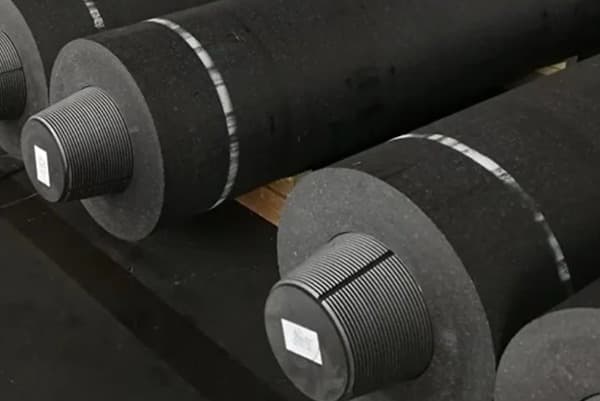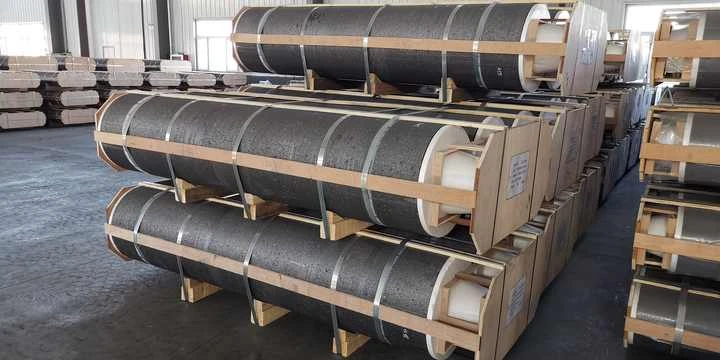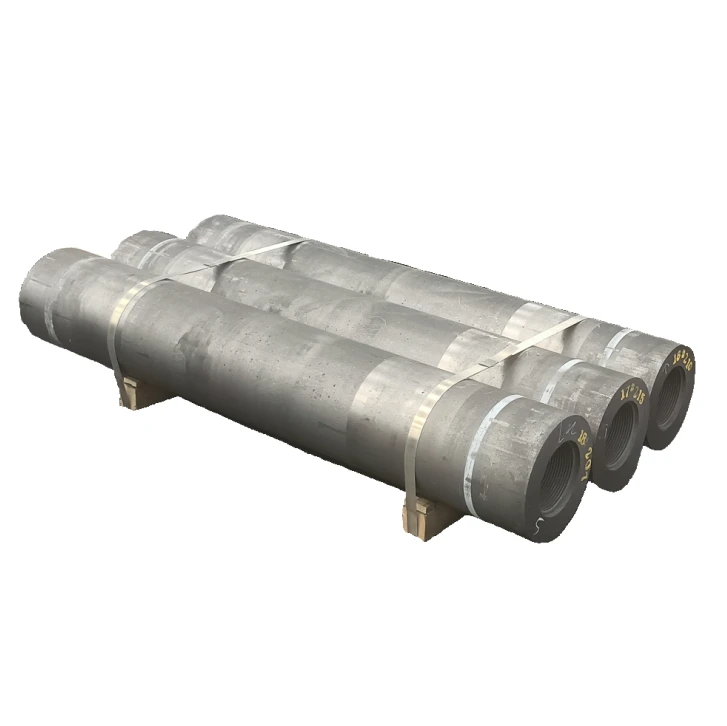In the world of modern metallurgy, the electric arc furnace (EAF) stands as a titan of efficiency and recycling, melting down tons of scrap steel to forge new products. At the very heart of this roaring beast is a component that makes it all possible: the graphite electrode. As Allen, the owner of a factory that has been producing these critical components for years, I’ve seen firsthand how the right electrode can make or break an operation’s efficiency. For procurement officers like my friend Mark Thompson in the USA, understanding the different grades is key to making a smart investment.
This guide will focus on the workhorse of the industry: the RP graphite electrode. We will explore what makes it the right choice for many applications, from its manufacturing process and key specifications to why its good electrical conductivity is so vital. For anyone involved in sourcing for steel production, foundries, or other smelting processes, this article will provide the clear, practical insights needed to source high-quality products confidently and ensure low consumption and superior performance in your furnace.
What Exactly is an RP Graphite Electrode?
The term "RP" stands for Regular Power. An RP graphite electrode is a specific grade of electrode designed for use in lower-power applications, such as small electric arc furnace operations and ladle furnaces. Think of it as the reliable, standard-duty option among the different grade graphite electrodes. While its siblings, the High Power (HP) and Ultra High Power (UHP) electrodes, are built for the most demanding, high-current furnaces, the RP graphite electrode is mainly used in furnaces where the electrical load and operating conditions are less extreme.
These electrodes are essentially large, cylindrical rods made of high-purity carbon. Their primary job is to act as a conductor of electricity, carrying a massive electric current from the power source down into the furnace. This current creates an intense arc between the electrode tip and the metallic charge (usually scrap steel), generating immense heat—up to 3,000°C (5,432°F)—which is needed for melting the metal. The RP graphite electrode is a consumable, meaning it is gradually used up during the steelmaking process, making a reliable supply of quality products essential.
How are High-Quality RP Graphite Electrodes Manufactured?
The journey of an RP graphite electrode from raw material to finished product is a complex and precise process that directly impacts its performance. It all begins with carefully selected raw material. The primary ingredient is high-quality petroleum coke, a carbon-rich material derived from oil refining. This coke is chosen for its low ash content and uniform structure. It is then mixed with a special binder, usually coal tar pitch, to form a thick, paste-like substance.
This paste is extruded or molded into the shape of a giant green electrode, which is then baked in a special furnace for several weeks. This baking process solidifies the binder and hardens the electrode. The final, and most critical, step is graphitization. The baked electrode is heated to an incredibly high temperature (close to 3000°C) in another specialized furnace. This intense heat rearranges the carbon atoms into the highly ordered, layered structure of graphite, giving the electrode its signature properties: excellent electrical conductivity, superior thermal shock resistance, and high mechanical strength. This rigorous process ensures the final product can withstand the brutal environment inside an arc furnace.
What is the Main Role of an RP Electrode in an Electric Arc Furnace?
In electric arc furnace steel production, the graphite electrode has one primary mission: to deliver enormous amounts of electrical energy to the charge. It serves as the terminal for the high-power circuit. In a typical three-phase AC furnace, three of these electrodes are lowered through the roof. When power is applied, an electric arc forms between the tips of the electrodes and the layer of scrap steel or other metals below.
This arc is a highly concentrated discharge of energy, converting electrical power into intense heat. This is what allows the EAF to smelt solid metal efficiently. The electrode must therefore be an exceptional conductive material, allowing the current to flow with minimal resistance and energy loss. Beyond simple conduction, it must also have high thermal resistance to survive the extreme temperatures and significant mechanical strength to endure the stresses of movement and potential scrap collapses inside the furnace. The RP graphite electrode is perfectly engineered for the moderate demands of these smaller furnaces.

What are the Key Specification Parameters for an RP Graphite Electrode?
For a procurement officer, understanding the technical specification sheet is crucial for ensuring you are buying the right product. While it might look like just a list of numbers, each parameter tells a story about the electrode’s quality and performance.
| Specification Parameter | Typical Value (for RP Grade) | What It Means for Performance |
|---|---|---|
| Apparent Density (g/cm³) | ≥ 1.52 | Higher density means a more compact, stronger electrode that resists oxidation and consumes slower. |
| Electrical Resistivity (μΩ.m) | ≤ 8.5 | Lower resistivity indicates better electrical conductivity, leading to lower energy loss and a more efficient melt. |
| Flexural Strength (MPa) | ≥ 9.0 | Measures the electrode’s ability to resist breaking under bending stress, a crucial aspect of mechanical strength. |
| Modulus of Elasticity (GPa) | ≤ 9.5 | Indicates the electrode’s stiffness. A lower value is better for resisting thermal shock. |
| Ash Content (%) | ≤ 0.5 | Lower ash means a purer electrode, preventing impurities from contaminating the steel. |
| Allowable Current (A/cm²) | 13 – 18 | The recommended range of current densities the electrode can handle without overheating or excessive consumption. |
These are the numbers that define the performance of an RP graphite electrode. When you source from a reliable factory, you should always receive a detailed specification sheet that guarantees these values are met or exceeded.
Why is Good Electrical Conductivity So Important for an RP Electrode?
Good electrical conductivity is perhaps the most critical property of a graphite electrode. This is measured by its inverse, electrical resistivity. The lower the resistivity, the better the conductivity. Imagine trying to send a lot of water through a very narrow pipe—you’d lose a lot of pressure and energy. The same principle applies here. An electrode with poor conductivity (high resistivity) will resist the flow of the electric current.
This resistance generates excess heat within the electrode itself, not in the arc where it’s needed. This leads to several problems. First, it’s a massive waste of energy, driving up the operational cost of the furnace. Second, the overheating can damage the electrode, causing cracks or increasing its consumption rate. A high-quality RP graphite electrode with high electrical conductivity ensures that the maximum amount of energy is delivered directly to the metal, resulting in a faster, more efficient, and more cost-effective smelting operation.
How Does an RP Electrode Differ from an HP or UHP Electrode?
Understanding the difference between the grades is key to avoiding overspending or, worse, using an electrode that can’t handle your furnace’s power. The main distinction lies in the raw material used and the resulting ability to handle different current densities.
- RP (Regular Power) Electrodes: Made from standard-grade petroleum coke. They are designed for lower current densities (typically under 18 A/cm²). They are used in ordinary power electric arc furnaces, ladle furnaces, and for smelting non-metallic materials like silicon.
- HP (High Power) Electrodes: Made from a higher grade of petroleum coke (sometimes including a percentage of needle coke). They can handle higher current densities and are used in high power electric arc furnaces for steelmaking and refining.
- UHP (Ultra-High Power) Electrodes: Made almost exclusively from premium needle coke, which provides superior strength and the lowest electrical resistance. These are built for the most powerful EAF operations with the highest current densities, where efficiency and speed are paramount.
Essentially, as you move from RP to HP and then to UHP, the electrode’s capacity to handle more power increases, but so does its cost. Choosing the right grade, like a Regular Power Graphite Electorode, for the right furnace is the most economical solution.

What are the Common Applications for RP Grade Graphite Electrodes?
While the RP graphite electrode is often associated with steel, its utility extends to various other metallurgical applications where moderate power is sufficient. Graphite electrodes are widely used in these areas because of their unique combination of properties.
One of the largest uses outside of steel making is in submerged arc furnace operations. These furnaces are used to produce a variety of materials, including:
- Ferroalloys: Alloys of iron with other elements like silicon or manganese, which are used in steel production.
- Industrial Silicon: Used in the chemical and aluminum industries.
- Yellow Phosphorus: A key industrial chemical.
- Refractory Materials: Producing high-temperature materials like corundum.
In all these cases, the RP graphite electrode provides the reliable, cost-effective performance needed to smelt the raw materials without requiring the higher power handling (and higher cost) of HP or UHP grades.
What are the Signs of a Low-Quality RP Graphite Electrode?
For a buyer, spotting a low-quality product before it causes problems in the furnace is a valuable skill. A poor-quality RP graphite electrode will not only perform badly but can also lead to operational downtime.
"I’ve seen clients come to us after a bad experience with another supplier. The biggest complaints are always about electrodes that consume too fast or break in the furnace. It almost always comes down to poor raw materials or a rushed manufacturing process." – Allen, Factory Owner
Here are some red flags to watch for:
- High Consumption Rate: If the electrode is burning away faster than the specification sheet suggests, it’s likely due to low density or poor resistance to oxidation.
- Surface Defects and Cracks: Before use, inspect the electrode surface. Cracks, especially transverse cracks (across the diameter), are signs of poor manufacturing and can cause the electrode to break in the furnace.
- High Electrical Resistance: If the furnace is drawing more power than usual for the same output, it could be due to a high-resistivity electrode wasting energy.
- Low Mechanical Strength: An electrode that chips or breaks easily during handling or operation is a clear indicator of inferior quality. This is often linked to improper baking or graphitization.

How Can You Ensure You’re Buying a High-Quality RP Graphite Electrode?
Ensuring quality starts with choosing the right supplier. As a buyer, you need to be proactive in your verification process. First, always ask for a detailed technical specification sheet and a certificate of analysis for the specific batch you are buying. Compare these numbers against industry standards. Second, inquire about the raw material they use. A reputable manufacturer will be transparent about their sourcing of petroleum coke and coal pitch.
Third, look for a supplier with robust quality control certifications, such as ISO 9001. This demonstrates a commitment to a standardized, repeatable manufacturing process. Don’t be afraid to ask for references or case studies from customers in your region. A confident supplier of high-quality electrodes, whether they are RP, High-power graphite electrode, or even Ultra-high power graphite electrode, will have a history of satisfied clients.
What Makes a Supplier a Reliable Partner for Your Graphite Electrode Needs?
A reliable partnership goes beyond just the product; it’s about service, communication, and trust. For buyers like Mark, who source from overseas, this is especially critical. A great supplier is a factory, not just a trading agent. A factory has direct control over quality, production schedules, and can offer better pricing.
Look for a supplier who communicates clearly and efficiently, providing regular updates on your order and shipping status. They should have experience exporting to your country and understand the logistics involved to prevent costly delays. A reliable partner acts as an extension of your team, providing technical support and working with you to ensure you get the right RP graphite electrode for your specific furnace application, every single time. It’s this level of partnership that turns a simple transaction into a long-term, profitable relationship.
Key Takeaways
The RP graphite electrode is a fundamental component in many smelting and steelmaking operations. Choosing the right one is essential for efficiency and profitability. Here are the most important things to remember:
- Fit for Purpose: RP stands for Regular Power. These electrodes are the cost-effective choice for lower-power EAFs, ladle furnaces, and submerged arc furnaces.
- Quality Starts with Raw Materials: The performance of an electrode is determined by the quality of the petroleum coke and binder used, and the precision of the baking and graphitization process.
- Specifications Matter: Pay close attention to key parameters like density, resistivity, and mechanical strength. These numbers directly translate to performance in your furnace.
- Conductivity is King: Good electrical conductivity (low resistivity) is vital for minimizing energy loss, reducing operational costs, and ensuring an efficient melting process.
- Choose Your Supplier Wisely: Partner with an experienced, certified factory that provides transparent specifications, clear communication, and has a proven track record of delivering high-quality products on time.
Post time: 09-22-2025


